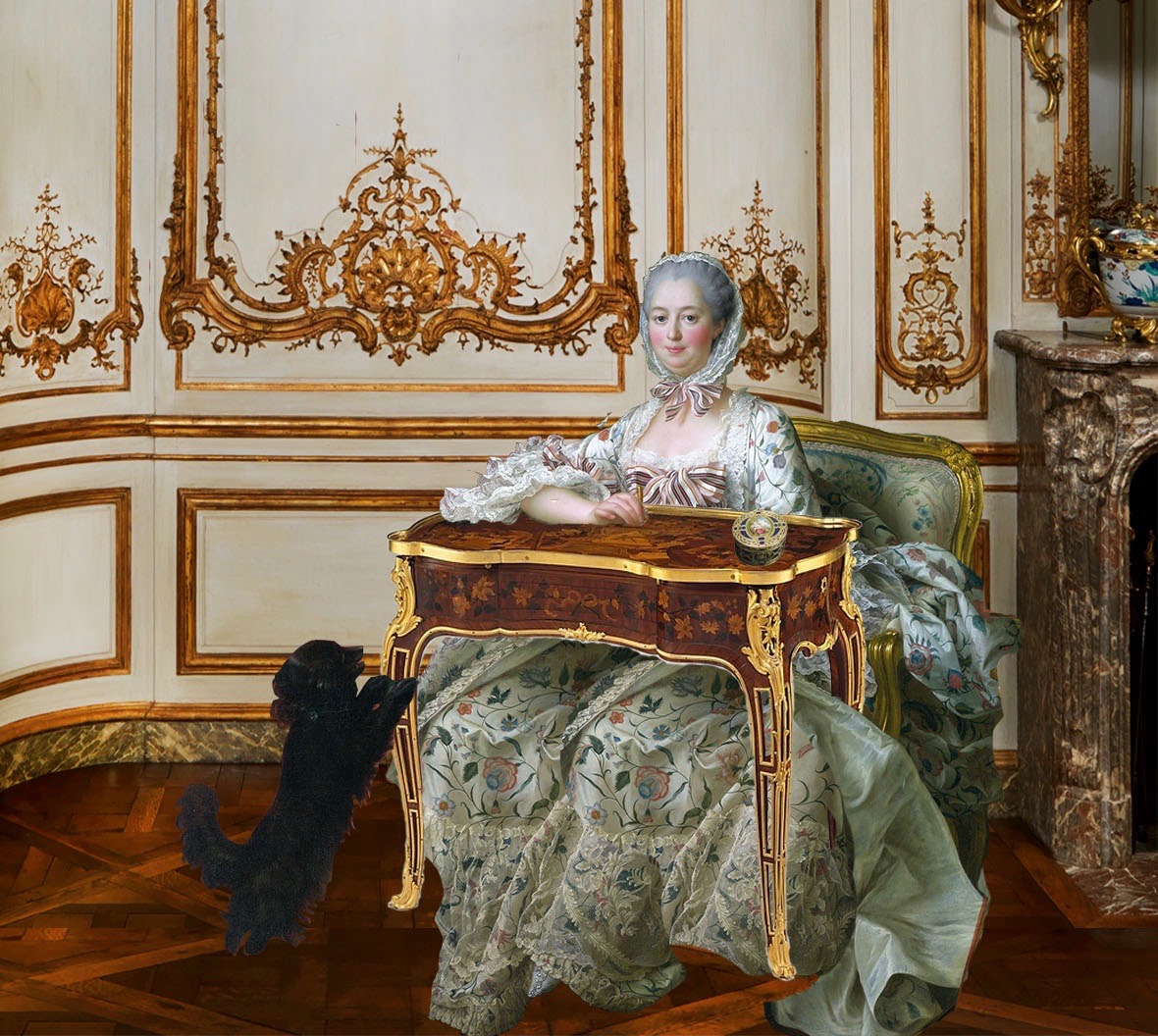Madame de Pompadour was a seminal enlightenment figure. As Louis XV’s mistress, she held incredible influence and power. As a cultural icon, she possessed not only the most sophisticated and sumptuous goods, but also her purchases represented the finest examples of cultural production. Had she lived long enough to see the Oeben table completed, one might have seen her sitting before it, with her dog Mimi by her side, and her very own snuffbox. Our composite image animates the material world of the enlightenment by featuring animate and inanimate objects that contextualize her experience. The luxurious world of Madame de Pompadour was a shiny veneer overlaying a dark reality, because each seemingly inorganic object has an organic past. By removing the gilded bronze, the wood, the enamel, our website pulls back the curtain of 18th century France to reveal the reality of 18th century global trade and exploitation through the origins of each material.
Click below to find out more about the objects in this room:

Composite Image of Madame de Pompadour and Continental Toy Spaniel extracted from François-Hubert Drouais, 1727 – 1775, Madame de Pompadour at her Tambour Frame, 1763-4, Oil on canvas, 217 x 156.8 cm, Signed; Dated and inscribed, Bought, 1977, NG6440. National Gallery Room 33. The Oeben Mechanical Table extracted from Jean François Oeben (1721-1763 and Roger Vandercruse (1727-1799), ca. 1761-63, French, Oak veneered with various other woods, Metalwork of Gold, Copper and Bronze, 69.9 × 81.9 × 46.7 cm, The Jack and Belle Linsky Collection, 1982. The snuffbox extracted from Claude Perron (master 1750, died in or before 1777), 1763–64, French, Paris, Gold, enamel, 1 9/16 x 3 5/16 x 2 1/2 in. (4 x 8.4 x 6.4cm), Metalwork-Gold and Platinum, Bequest of Catherine D. Wentworth, 1948, 48.187.450. On view at The Met Fifth Avenue in Gallery 530 against the background of the Hôtel de Varengeville Room digitally composed by Victoria Martinez